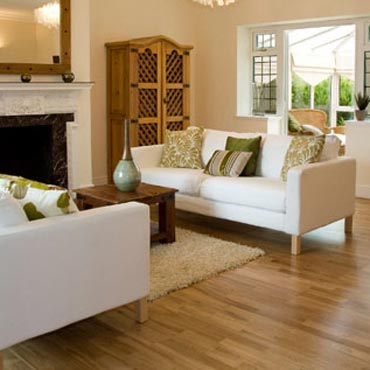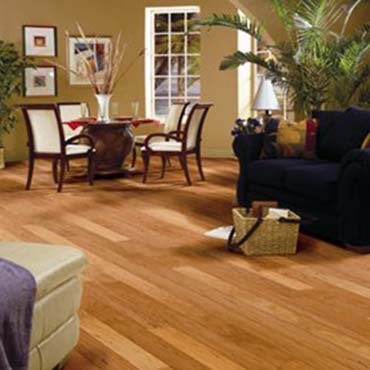Trims and Moldings

The Timeless Elegance of Wood Trims and Moldings in Modern Interior Design
In the dynamic world of interior design, wood trims and moldings have retained their charm and significance, seamlessly blending tradition with modern aesthetics. Their timeless appeal lies not only in their classic beauty but also in their versatility, durability, and sustainability, making them indispensable elements in contemporary interior decor.
Types of Wood Trims and Moldings
Wood trims and moldings come in various forms, each with its unique character and purpose. Crown moldings, often used to gracefully link
walls and ceilings, add a touch of elegance and can make a room appear taller or more refined. Baseboards run along the lower part of interior walls, providing a visual foundation and protecting walls from scuffs and wear. Chair rails, originally designed to protect walls from chair backs, now serve as decorative elements that can also be used to create two-tone wall effects. Window and door casings frame openings, enhancing the overall architectural quality of a space. Each type serves a functional and aesthetic purpose, contributing to the cohesive beauty of a room's design.
Versatility and Durability
Wood trims and moldings are celebrated for their versatility. They can be painted, stained, or left in their natural state, allowing for a range of stylistic expressions. From sleek, contemporary designs to more ornate, classical profiles, wood moldings can complement various interior styles. Furthermore, the durability of wood ensures that these elements withstand the test of time, both in style and structure. Hardwoods like oak, maple, and cherry are popular for their longevity and resilience, making them ideal choices for high-traffic areas.
Sustainability and Environmental Impact
In recent years, sustainability has become a critical consideration in interior design. Wood, as a natural and renewable resource, stands out for its environmentally friendly qualities. The key is sourcing wood trims and moldings from responsibly managed forests, ensuring minimal impact on the environment. Additionally, wood's natural ability to regulate humidity contributes to healthier indoor air quality, an aspect increasingly valued in modern design practices.
Enhancing Interior Spaces
The strategic use of wood trims and moldings can dramatically enhance interior spaces. They add character and depth, framing views and accentuating architectural details. In minimalist designs, a simple trim can add warmth and texture without overwhelming the space. In more traditional settings, ornate moldings can create a sense of luxury and grandeur. The key is in the details – the right profiles, sizes, and finishes can either make a subtle statement or serve as a focal point.
Tips for Selecting the Ideal Wood Trims and Moldings
For interior designers, decorators, and design consultants, selecting the perfect wood trim and molding involves several considerations:
- Match the Style: Ensure that the molding complements the room's overall design aesthetic. A modern, minimalist space may benefit from simple, clean-lined trims, while a more traditional space could be enhanced with detailed, ornate moldings.
- Consider Proportions: The size of the molding should be in proportion to the room's dimensions and ceiling height. Larger rooms with high ceilings can accommodate heavier, more prominent moldings, whereas smaller spaces benefit from subtler trims.
- Finish and Color: Decide whether the trim will be a standout feature or blend with the surroundings. Stains can highlight the natural beauty of the wood, while paint can either contrast or harmonize with the room’s color palette.
- Quality Matters: Invest in high-quality wood and craftsmanship. Superior materials not only last longer but also provide a finer, more elegant finish.
Recent Trends and Innovations
The recent trends in wood trims and moldings reflect a blend of innovation and tradition. Eco-friendly materials and finishes are becoming increasingly popular, aligning with the growing demand for sustainable design solutions. Additionally, there's a resurgence in the use of bold colors and contrasting trim colors, adding a modern twist to a classic design element.
Moreover, technological advancements have led to the creation of engineered wood products that offer the look and feel of real wood, often with enhanced durability and lower costs. These innovations expand the possibilities for designers and homeowners, allowing for greater creativity and customization.
Conclusion
Wood trims and moldings, with their rich history and adaptability, continue to play a pivotal role in modern interior design. They offer a unique blend of functionality, beauty, and sustainability, making them a favorite among design professionals. By understanding their types, benefits, and recent trends, designers can effectively use wood trims and moldings to elevate and personalize interior spaces, creating environments that are both timeless and reflective of contemporary tastes.
Disclaimer: The information provided in this article is for general informational purposes only. While we strive to ensure the accuracy and reliability of the information presented, we make no warranties, express or implied, about the completeness, accuracy, reliability, suitability, or availability with respect to the content. Any reliance you place on such information is strictly at your own risk. We recommend consulting with professionals for specific advice tailored to your project’s needs, particularly regarding building codes, regulations, and product specifications.
Under no circumstances shall we be liable for any loss or damage, including without limitation, indirect or consequential loss or damage, arising from the use of, or reliance on, the information provided in this article.





